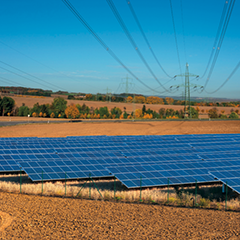In a speech at this year’s Energy Storage Conference and Exhibition, Prof. Dr. Eicke R. Weber, Director of the Fraunhofer Institute for Solar Energy Systems, stated that: “The energy storage market is in the same situation today as photovoltaics was ten years ago; only development in the area of storage must proceed significantly faster.” Why? It seems that if not, all our hard work in furthering PV uptake may go to waste…
Energy grids across the world are struggling to cope with a surge in demand for electricity and increasingly volatile supply from renewable power sources. Take the
UK for example, where the government is committed to stringent carbon dioxide reduction targets. These can only be met by massively increasing electricity use – which currently accounts for about a third of all energy consumption – from renewables at the expense of oil and gas.
Peak demand on the UK grid is currently 60GW, but by 2050, the government estimates this will increase six-fold as demand for electric cars and household heating soars. To meet this demand, more pylons and cabling will be needed, adding up to an estimated £1,000 a year to consumer bills. And it’s not just about higher demand and cost, as renewable power sources such as wind and solar are, by their very nature, variable – when the wind doesn’t blow and sun doesn’t shine, little or no power is generated.
Connectivity Countries the world over, and particularly those investing heavily in renewable energy, are facing the same problem, and solutions are few and far between. Increasing fast-acting generation in order to fill energy gaps is one answer, but as most generators of this type, such as diesel turbines, emit CO2, they are somewhat counterproductive.
Another way is to increase connectivity with other countries, but in a world in which national energy security is high on political agendas, this is far from ideal. And besides, as many weather patterns are regional, this is hardly a winning solution.



























